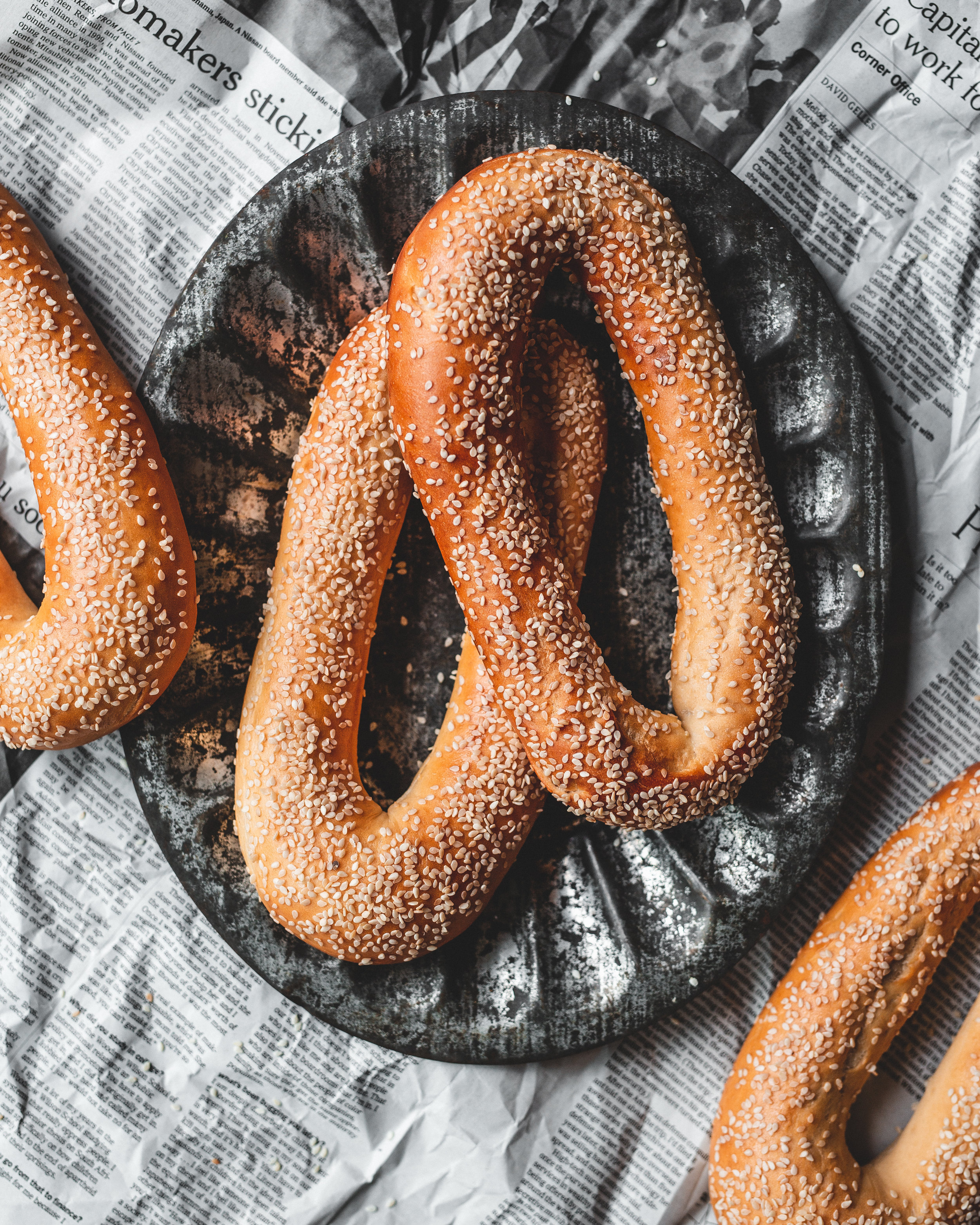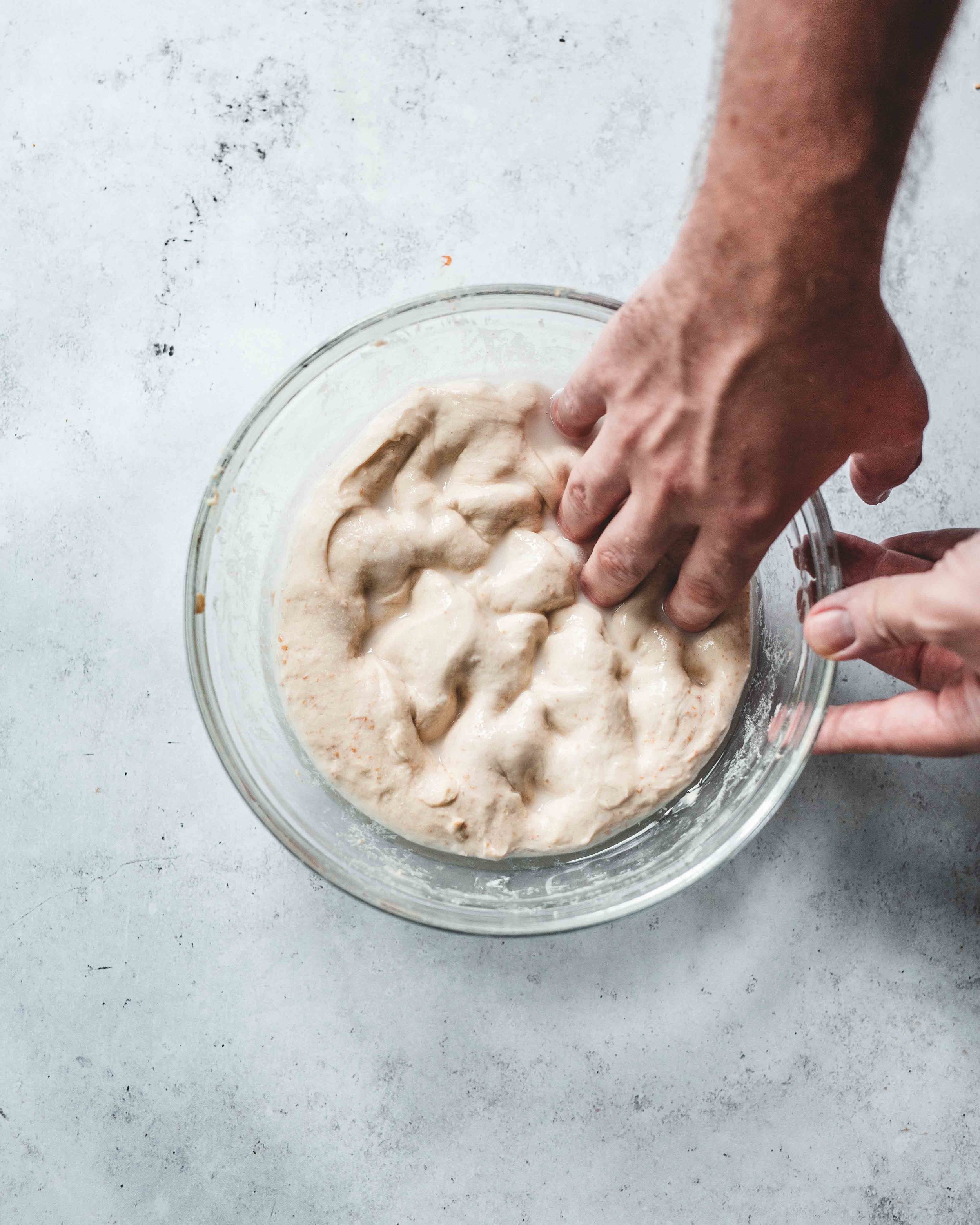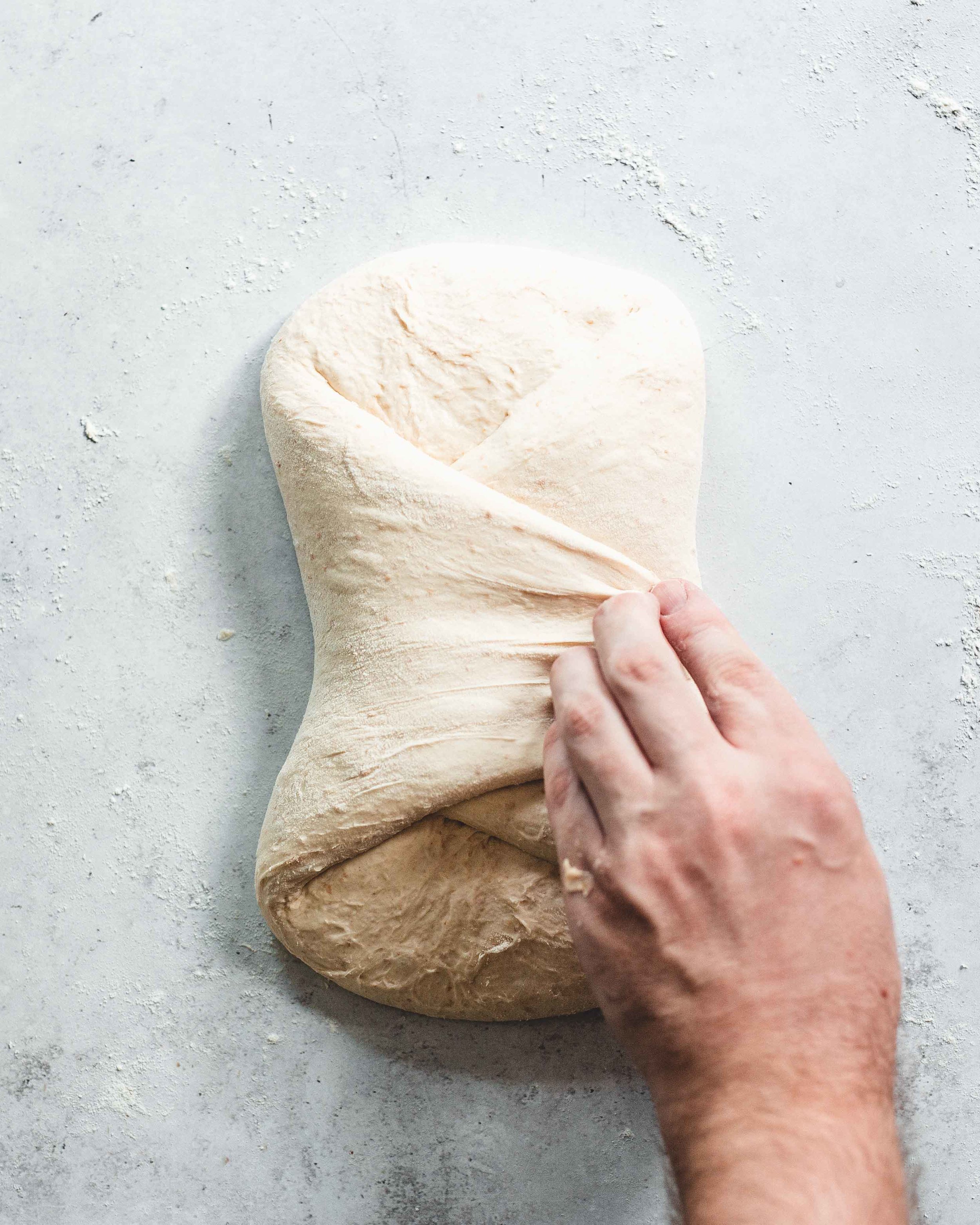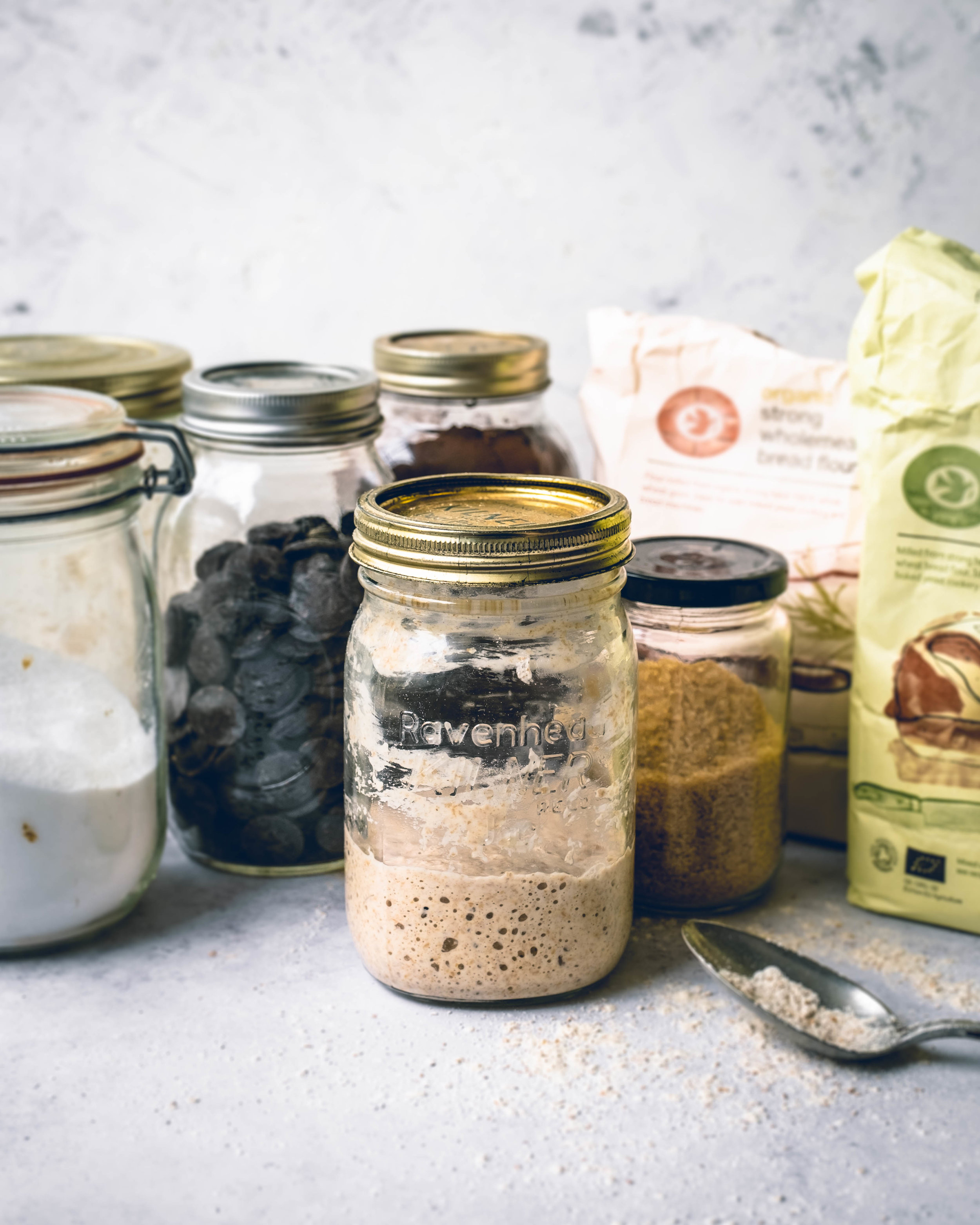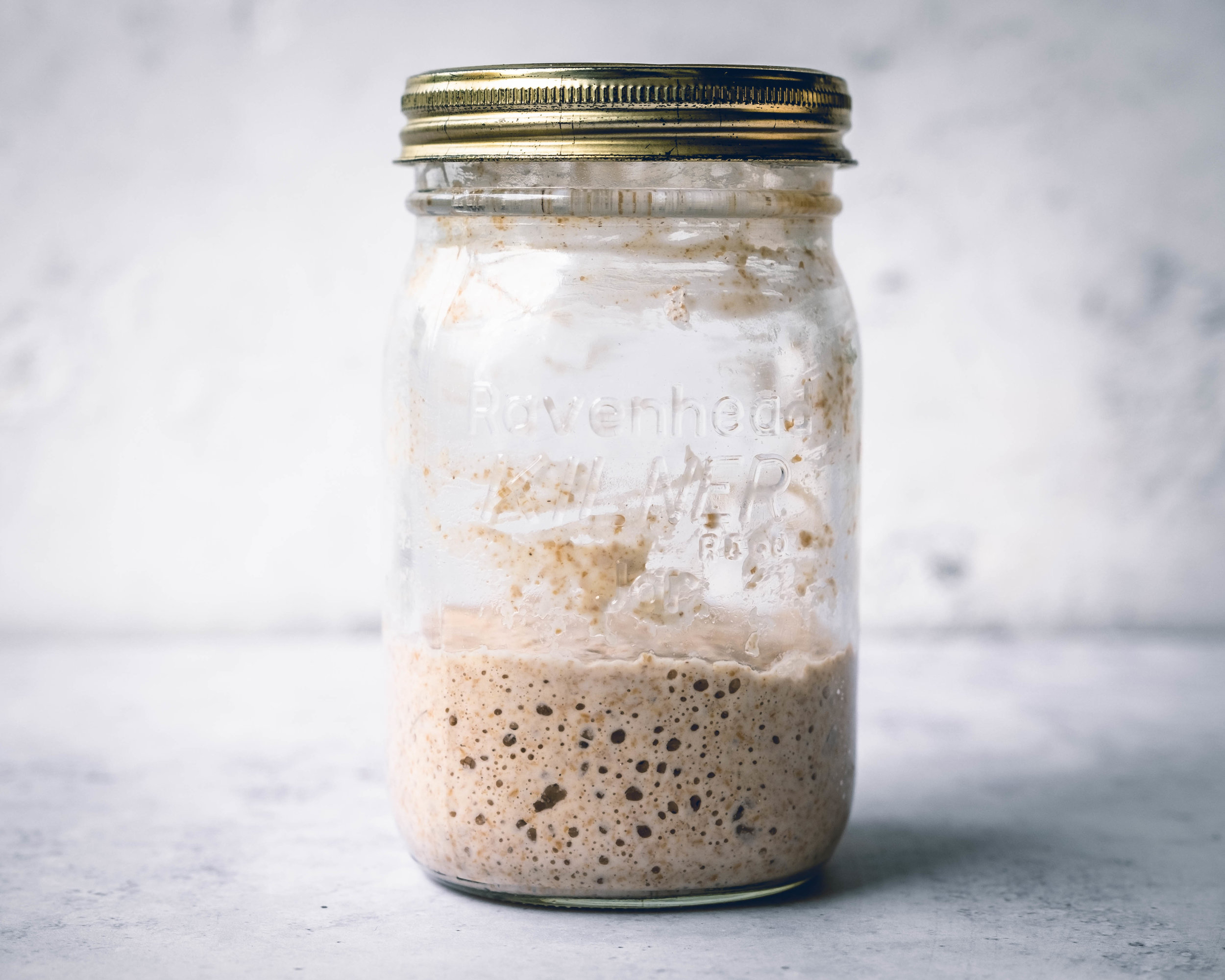In the last few months it feels like I have been on the road more than I have been at home and as much as I love exploring new places and spending time in different kitchens around the world, there is a joy about coming home and being back in a routine, cooking in my own kitchen and sleeping in my own bed. However, after a couple weeks back in London, I find that the recipes and ideas that are stuck in the back of my mind start to sneak their way out and demand to be made; to remind myself of those trips. The most recent example of this was with Jerusalem Bagels, which I first tried at the Jaffa Gate of Jerusalem’s Old City.
Bagels are seen as quintessentially Jewish foods, especially in the US where the bagel was popularised by Eastern European, especially Polish, immigrants in the 19th Century. The Jerusalem bagel is different because its origin isn’t really Eastern European, like its US cousin, it comes from the Middle East. In fact very similar breads are popular all across the Middle East and go by names such as Simit in Turkey or Ka’ak in Arabic countries. For those of us who really only know Eastern European or US style bagels there are some marked differences. The most obvious difference is the shape, being oblong rather than round. The base of the bagels is a very straightforward yeasted dough which contains milk powder and a little sugar. Unlike their US cousins there is no barley malt syrup included and most importantly they’re never boiled, both of which make them easier to make at home. The final bagels, because of their methods, have different textures. The US bagel has its characteristic chew whilst the Jerusalem bagels have a crisp crust with a lighter fluffy centre.
For the recipe I turned to a baker I was lucky enough to meet and spend time with on a recent trip to Israel, with Vibe Israel, the baker behind Lehamim Bakery in Tel Aviv, Uri Scheft. Uri and his breads may be familiar to those who have visited New York as he was involved with the opening of Breads Bakery (although he is no longer connected with said bakery). I was lucky enough to spend a few hours with Uri and learn about his breads and learn how to make a couple traditional recipes, like challah. Meeting Uri was an amazing experiences, he clearly is an incredibly talented baker and his bakery in Tel Aviv is a massively impressive undertaking. Underneath the bustling bakery is a cavernous kitchen with seemingly endless bakers toiling away making a huge variety of breads, cakes and of course Uri’s famous babka. If you’re a fan of babka you owe Uri a debt of gratitude because the current trend is arguably a result of the babka he sold at Breads Bakery in New York. If you’re ever in Tel Aviv a visit to Lehamim is an absolute best
To talk about how to serve the bagel we need to go back to the Jaffa Gate. Very early in the morning a baker takes his bagels and sets up shop at a stand just outside the gate. He sells the bagels, alongside a couple other breads, and with them he gives you a little paper package of zataar. Before we entered the city we tore chunks from the bread and dipped it in the zataar, a perfect breakfast before we tracked down some coffee (dont get me started on my love for arabic/turkish coffee infused with cardamom). Making the bagels back at home in London I wanted to use them to create a more substantial breakfast and taking some inspiration from Tatte Bakery in Boston I made egg in a hole and I would strongly encourage you to do so too, this is a fabulous brunch dish.
Jerusalem Bagels
Makes 6
Recipe adapted from Breaking Breads by Uri Scheft
Bagels
500g plain flour
300ml water, room temperature
7g active dried yeast
60g dry milk powder
50g caster sugar
15g fine salt
20g extra virgin olive oil
Egg Wash
1 large egg
1 tbsp water
Pinch fine sea salt
60g sesame seeds
Coarse sea salt, for sprinkling
To make the dough place the flour, dried yeast, milk powder, sugar and salt into a large bowl and mix together to combine. Pour in the water and olive oil and using an electric mixer with the dough hook attached (or kneading by hand) mix to form a rough dough. On low/medium speed knead the dough for about 10 minutes or until smooth and elastic. Note that this dough is fairly low in hydration so it wont be a super silky stretchy dough.
Form the dough into a ball and place into a clean bowl and cover, setting aside until doubled in size, around an hour. At this point instead of rising the dough at room temperature I pop the dough into the fridge overnight to very slowly prove. I do this simply because I cannot resist the idea of fresh bagels for breakfast at the weekend.
If you’ve chilled your dough overnight take it out of the fridge and allow it to come to room temperature for about 15-20 minutes. Take the risen dough and gently press to deflate. Divide the dough into 6 equal sized pieces, forming each one into a ball, then cover with a cloth to prevent them from drying out. Working with one piece of dough at a time roll out into ropes of dough roughly 45-50cm long. Squeeze the two ends together, gently rolling briefly on the counter to ensure the ends are stuck together. I personally find this method easier but you can also just press a finger through the middle of each ball of dough then slowly make the hole larger. If doing this you may need to allow each portion of dough to rest halfway through the shaping as it may resit a little before it gets to the desired size.
Set the finished bagels onto two parchment lined baking trays then lightly cover and set aside for an hour or so until risen and puffy to the touch (they wont quite double in size but they will increase in volume). Meanwhile preheat the oven to 180ºC/160ºC fan 350ºF
For the egg wash beat together the egg, water and salt until the egg in uniform in colour. Lightly brush each of the bagels with the egg wash and sprinkle liberally with sesame seeds and a little flaked sea salt. Bake in the preheated oven for about 14-15 minutes until golden brown. Remove and allow to cool before serving.
Jerusalem Bagels are best served within a few hours of baking.
To serve them as a full brunch dish, as egg in a hole, place a tbsp butter or oil in a wide pan and place the bagel on top. Over medium heat add two eggs into the hole of the bagel (a little of the whites may spill over but don’t worry too much about that), season with a little salt and pepper then place a lid onto the pan and cook for 2-3 minutes or until the egg white is set. I prefer my egg yolk very runny but you can cook for a little longer if you prefer. Serve with a sprinkling of zataar, some zhoug, cheese or just a sprinkling of fresh parsley. To remind me of Israel I serve these with a very strong cup of arabic cardamom coffee.
